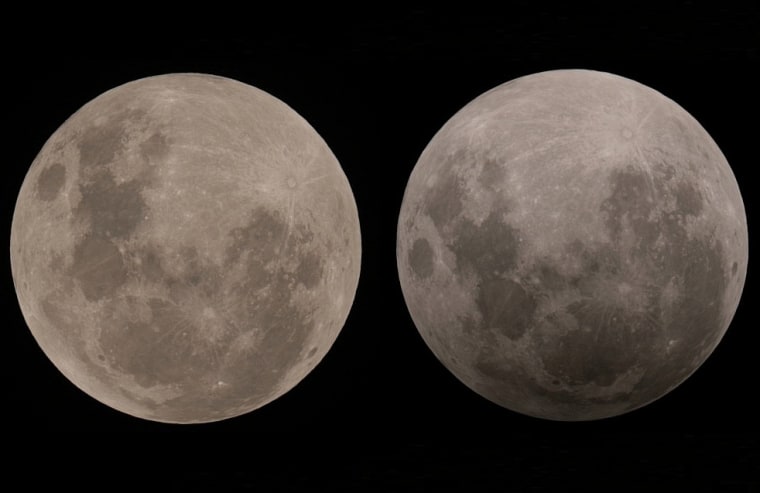
Did you catch today's eclipse? You probably didn't notice the penumbral lunar eclipse unless you knew it was coming — but fortunately, skywatchers around the world were clearly ready.
This photo by Australian astrophotographer Andrew Wall illustrates just how subtle the eclipse was. Earth's fuzzy shadow dimmed the bright lunar disk at the height of the eclipse, which translated to 9:33 a.m. ET today.
The dimming effect was muted because the moon traveled just through the very edge of the shadow this time around — and not through the deepest part of the shadow, as it did during last December's total lunar eclipse.
The prime viewing area included Australia and the Pacific as well as Alaska and most of Asia.
"There was a very subtle darkening of the lunar limb at totality; barely noticeable to the untrained eye," Pakistani skywatcher Ramiz Qureshi told SpaceWeather.com in a report from Karachi. "In fact, I nearly missed it until a friend reminded me."
Qureshi put together a close-up shot and a wider-angle photograph to create this composite view of the eclipse. We also received a picture from Terry Staats in Chiba City, Japan, via NBC News' FirstPerson photo-uploading page. If you missed today's subtle show, there'll be three replays next year — including a partial lunar eclipse on April 25 and penumbral eclipses on May 25 and Oct. 18.
For more views of today's lunar eclipse, as well as the total solar eclipse that took place two weeks ago, check out SpaceWeather.com's eclipse photo gallery.


More about lunar eclipses:
- Flash interactive: What causes a lunar eclipse?
- Why a lunar eclipse won't drive you loony
- Nine cool facts about lunar eclipses
- How super was that Supermoon?
Alan Boyle is NBCNews.com's science editor. Connect with the Cosmic Log community by "liking" the log's Facebook page, following @b0yle on Twitter and adding the Cosmic Log page to your Google+ presence. To keep up with Cosmic Log as well as NBCNews.com's other stories about science and space, sign up for the Tech & Science newsletter, delivered via email. You can also check out "The Case for Pluto," my book about the controversial dwarf planet and the search for new worlds.